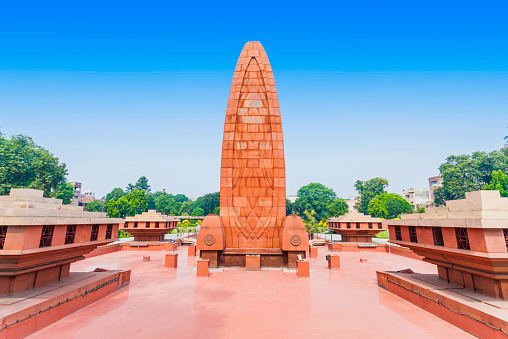Why Dyer is compelled to this open firing?
- The excerpt that follows was part of a detailed and rigorous cross-examination of General Dyer. Sir Chimanlal Setalvad, a lawyer from Bharuch, Gujarat, who lived in Bombay, conducted this particular part of the cross-examination:
Chimanlal Setalvad: "You took two armoured cars with you?"
Dyer: "Yes."
Chimanlal Setalvad: "Those cars had machine guns?"
Dyer: "Yes."
Chimanlal Setalvad: "And when you took them you meant to use the machine guns against the crowd, did you?"
Dyer: "If necessary. If the necessity arose, and I was attacked, or anything else like that, I presume I would have used them."
Chimanlal Setalvad: "When you arrived there you were not able to take the armoured cars in because the passage was too narrow?"
Dyer: "Yes."
Chimanlal Setalvad: "Supposing the passage was sufficient to allow the armoured cars to go in, would you have opened fire with the machine guns?"
Dyer: "I think, probably, yes."
Chimanlal Setalvad: "In that case the casualties would have been very much higher?"
Dyer: "Yes."
Chimanlal Setalvad: "And you did not open fire with the machine guns simply by the accident of the armoured cars not being able to get in?"
Dyer: "I have answered you. I have said that if they had been there the probability is that I would have opened fire with them."
Chimanlal Setalvad: "With the machine guns straight?"
Dyer: "With the machine guns."
Chimanlal Setalvad: "I take it that your idea in taking that action was to strike terror?"
Dyer: "Call it what you like. I was going to punish them. My idea from the military point of view was to make a wide impression."
Chimanlal Setalvad: "To strike terror not only in the city of Amritsar, but throughout the Punjab?"
Dyer: "Yes, throughout the Punjab. I wanted to reduce their morale; the morale of the rebels."
Chimanlal Setalvad: "Did it occur to you that by adopting this method of 'frightfulness' – excuse the term – you were really doing a great disservice to the British Raj by driving discontent deep?"
Dyer: "I did not like the idea of doing it, but I also realised that it was the only means of saving life and that any reasonable man with justice in his mind would realise that I had done the right thing; it was a merciful though horrible act and they ought to be thankful to me for doing it. I thought I would be doing a jolly lot of good and they would realise that they were not to be wicked."
- Dyer later explained that this act "was not to disperse the meeting but to punish the Indians for disobedience." The excerpt from the cross-examination reveals the mind of Dyer and his reasons for the deliberate massacre that earned him a place as one of modern history’s greatest cowards.





